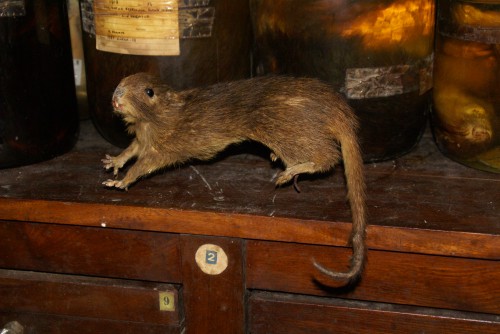Once widely distributed across mainland Cuba and the neighbouring Isle of Pines, by the early twentieth century the Dwarf Hutia (Mesocapromys nanus) was restricted to the largely inaccessible Zapata Swamp. The last individuals known to science were captured in 1937, but local reports and the discovery of tiny droppings suggest that the species may have persisted beyond this date. However, with no sightings for over 70 years, the Dwarf Hutia may be extinct, as is possible for its close relative the Little Earth Hutia (Mesocapromys sanfelipensis). If any populations still survive, they almost certainly consist of a handful of individuals at most. Classified as Critically Endangered (Possibly Extinct) on the IUCN Red List of Threatened Species.
How this species is doing
Pressure
It is most likely that the decline of the Dwarf Hutia has resulted from interactions with invasive mammals, in particular competition with black rats and predation by mongooses; its small size in comparison to other Cuban hutia species may have made it more vulnerable to invasive mammals. Human-caused habitat destruction, including accidental fires in the Zapata Swamp, is also likely to threaten any surviving populations of the species.
Responses
The last known collection locality for the species is the Zapata Swamp, which is now a National Park. Efforts are needed to survey the Zapata Swamp to investigate whether any dwarf hutias may still survive there. An invasive mammal control programme is also necessary to conserve the highly threatened surviving land mammals of the Cuban archipelago.
Knowledge level
One of the few modern mammals to be first described from fossil remains, this species was thought to be extinct until living animals were discovered. Almost nothing is known about the ecological requirements of the Dwarf Hutia, because the species is known largely from fossils and museum specimens collected in the early twentieth century. A female Dwarf Hutia that was captured from the Zapata Swamp in 1937 and sent to Berlin Zoo gave birth to a single young. The species is common in fossil bone accumulations representing old owl roosts, indicating that it was once an important dietary component of these birds. Other hutia species are highly social and engage in various activities (e.g. foraging, grooming) as a group. The average lifespan of most hutia species is eight to eleven years.








